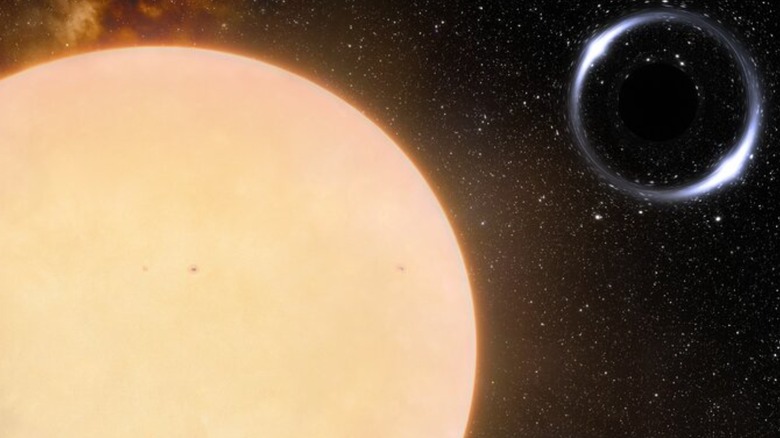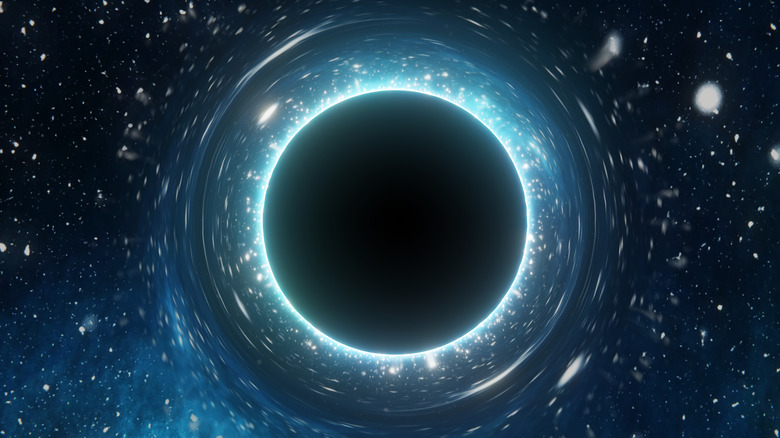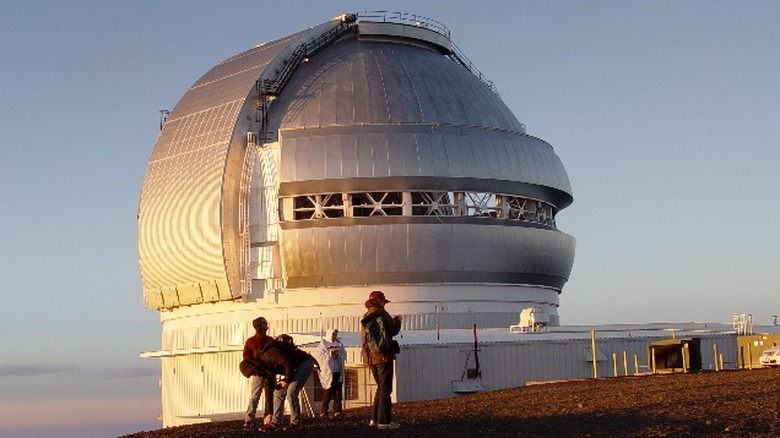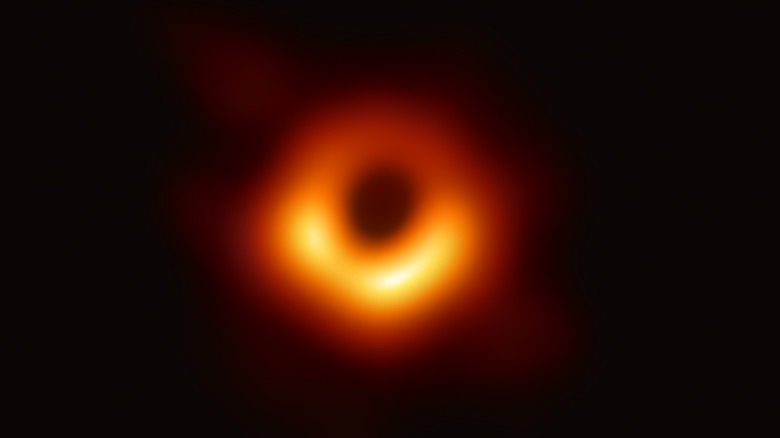Scientists Just Discovered The Closest Black Hole To Earth
Black holes are some of the most terrifying yet fascinating phenomena in our universe. They are what happens when gravity gets so strong in a celestial location that even light cannot get out, according to NASA. They typically form when the center of a star implodes in on itself, stuffing too much matter into too small a space. Now, it turns out that there is one such black hole lurking in our "cosmic backyard," according to a press release from the National Science Foundation's NOIRLab.
The newly discovered black hole was announced in the Monthly Notices of the Royal Astronomical Society on November 2, 2022. "This is the nearest known black hole by a factor of 3," the study authors wrote. It is located in the Ophiuchus constellation, which is around 1,600 light-years from Earth, according to NOIR Lab. The previous closest black hole to Earth was in the constellation Monoceros. Researchers have named the new record holder Gaia BH1.
All about Gaia BH1
There are three distinct types of black holes, according to NASA. There are tiny black holes that can be as small as an atom, stellar black holes that are made from imploding stars, and supermassive black holes that sit at the center of every galaxy and have the mass of 1 million suns. Gaia BH1 is a stellar black hole that has a mass about 10 times greater than our sun's, according to Live Science. It's also dormant, according to NOIRLab. What does that mean?
When a star with a mass five to 10 times that of our sun collapses inward, the gravitational pull sucks in everything within a certain boundary called the event horizon, according to Live Science. When a black hole is actively feeding, it hoovers up matter from celestial bodies like planets and other stars. This creates a corona of light around the black hole, making it visible. Dormant black holes are black holes that are not actively feeding, which makes them much harder to discover.
Finding Gaia BH1
So how did researchers find Gaia BH1? They scoured a bunch of data taken from the European Space Agency's Gaia spacecraft on the locations and movements of the approximately 2 billion stars in our Milky Way galaxy, according to Live Science. One of these stars was moving oddly in a way that suggested it might be pulled off its normal course by a black hole. To confirm their hypothesis, the scientists then studied the star's orbit more closely through the Gemini North telescope in Hawaii, according to NOIRLab. They could not come up with an explanation for the orbit they observed that didn't involve a black hole.
"Our Gemini follow-up observations confirmed beyond reasonable doubt that the binary contains a normal star and at least one dormant black hole," lead author and Harvard-Smithsonian Center for Astrophysics in Massachusetts and the Max Planck Institute for Astronomy astrophysicist Kareem El-Badry said. There are projected to be around 100 million stellar black holes in the Milky Way, and this research offers hope that we may locate more of them. "Its discovery suggests the existence of a sizable population of dormant black holes in binaries. Future Gaia releases will likely facilitate the discovery of dozens more," the study authors wrote in the Monthly Notices of the Royal Astronomical Society.
Binary system
Gaia BH1 isn't just unique because its now the closest known black hole to the Earth. It's also unique for the kind of system it forms a part of: a binary system in which a star orbits a black hole. "Take the Solar System, put a black hole where the Sun is, and the Sun where the Earth is, and you get this system," astrophysicist Kareem El-Badry told NOIRLab. It is the first system of its kind discovered in our Milky Way galaxy.
The system still holds unanswered questions. For one, why didn't the black hole either swallow or more dramatically impact the star's orbit? The researchers suspect that the black hole was once a star with 20 times the mass of our sun, which means it should have had more of an influence on the star as it collapsed than it appears to have, according to Live Science. The scientists want to know why and what they're missing about how black holes in binary systems form, according to NOIRLab. "It is interesting that this system is not easily accommodated by standard binary evolution models," El-Badry said.



